In the competitive landscape of compact hatchbacks, the Mitsubishi Space Star and Suzuki Swift stand out for their unique blend of styling, economy, and performance. These two vehicles are popular choices for urban dwellers seeking practicality without sacrificing driving pleasure. In this article, we will perform a detailed comparison of the Mitsubishi Space Star and the Suzuki Swift, examining their technical specifications, innovations, and overall efficiency.
Mitsubishi Space Star vs Suzuki Swift – Performance, range & efficiency compared
Compare performance, boot capacity, efficiency and price at a glance.
Find out which car is the better choice for you – Mitsubishi Space Star or Suzuki Swift?
Design and Dimensions
Both the Mitsubishi Space Star and Suzuki Swift offer compact dimensions making them great for navigating city streets and fitting into tight parking spots. The Space Star measures 3845 mm in length, 1665 mm in width, and 1505 mm in height, providing a lightweight curb weight starting from 940 kg. On the other hand, the Swift, slightly longer at 3860 mm with a width of 1735 mm, offers a taller profile with heights ranging from 1485 mm to 1510 mm and a heavier curb weight from 1069 kg to 1145 kg. This makes the Swift marginally bulkier, though it does enhance the feeling of stability on the road.
Powertrains and Performance
The Mitsubishi Space Star is powered by a 1.2L three-cylinder petrol engine that produces a modest 71 HP and 102 Nm of torque, available with both manual and CVT automatic transmissions. It is designed primarily for efficiency, with fuel consumption ratings ranging from 4.9 to 5.5 L/100 km and a CO2 output of between 112 and 125 g/km. It can achieve a top speed of 167 km/h and takes around 14.1 seconds to reach 100 km/h.
In contrast, the Suzuki Swift features a slightly more powerful 1.2L MHEV (mild hybrid electric vehicle) engine, delivering 82 HP and 112 Nm of torque, also available with manual and automatic options. It excels in fuel efficiency, with consumption figures as low as 4.4 L/100 km, and CO2 emissions ranging from 98 to 110 g/km. The Swift can reach a maximum speed of 170 km/h and accelerates from 0 to 100 km/h in approximately 12.5 seconds, making it the quicker option of the two.
Interior and Cargo Capacity
Inside, both models are equipped to comfortably accommodate five passengers. The Space Star offers a trunk capacity of 235 L, which can be beneficial for everyday grocery runs or short trips. The Swift, however, leads in this category, offering a larger trunk space of 265 L, making it more versatile for customers needing that additional room.
As for technology and features, both vehicles come with a range of modern infotainment systems, connectivity options, and safety features. The Swift, being a slight newer model, may offer more contemporary tech innovations, particularly in terms of onboard safety systems, like advanced driver assistance and integration with smartphones.
Fuel Efficiency and Emissions
When it comes to ecological considerations, the Swift takes a step ahead, primarily due to its mild hybrid technology, which helps to lower its carbon footprint and enhance fuel efficiency. The Space Star, while still efficient, especially compared to many larger vehicles, exhibits slightly higher emissions and fuel consumption figures.
Conclusion: Which One to Choose?
In summation, both the Mitsubishi Space Star and the Suzuki Swift deliver solid performance and practicality for those seeking a compact hatchback. If fuel efficiency and advanced hybrid technology are your main priorities, the Suzuki Swift shines as the winner. However, if you're looking for a more budget-friendly option that still promises reliability and adequate performance for city driving, the Mitsubishi Space Star is worthy of consideration. Ultimately, the choice between these two models boils down to individual preferences regarding performance, space, and eco-friendliness.
Here’s where it gets real: The technical differences in detail
Costs and Efficiency:
Looking at overall running costs, both models reveal some interesting differences in everyday economy.
Mitsubishi Space Star has a convincingly advantage in terms of price – it starts at 11600 £, while the Suzuki Swift costs 17100 £. That’s a price difference of around 5494 £.
Fuel consumption also shows a difference: Suzuki Swift manages with 4.40 L and is therefore somewhat more efficient than the Mitsubishi Space Star with 4.90 L. The difference is about 0.50 L per 100 km.
Engine and Performance:
Under the bonnet, it becomes clear which model is tuned for sportiness and which one takes the lead when you hit the accelerator.
When it comes to engine power, the Suzuki Swift has a to a small extent edge – offering 82 HP compared to 71 HP. That’s roughly 11 HP more horsepower.
In terms of top speed, the Suzuki Swift performs minimal better – reaching 170 km/h, while the Mitsubishi Space Star tops out at 167 km/h. The difference is around 3 km/h.
There’s also a difference in torque: Suzuki Swift pulls slight stronger with 112 Nm compared to 102 Nm. That’s about 10 Nm difference.
Space and Everyday Use:
Cabin size, boot volume and payload all play a role in everyday practicality. Here, comfort and flexibility make the difference.
Both vehicles offer seating for 5 people.
In curb weight, Mitsubishi Space Star is a bit lighter – 940 kg compared to 1069 kg. The difference is around 129 kg.
In terms of boot space, the Suzuki Swift offers slightly more room – 265 L compared to 235 L. That’s a difference of about 30 L.
In maximum load capacity, the Suzuki Swift performs hardly perceptible better – up to 980 L, which is about 68 L more than the Mitsubishi Space Star.
When it comes to payload, Mitsubishi Space Star evident takes the win – 400 kg compared to 296 kg. That’s a difference of about 104 kg.
Who wins the race?
The Suzuki Swift proves to be has a very small edge and therefore becomes our DriveDuel Champion!
Suzuki Swift is the better all-rounder in this comparison.
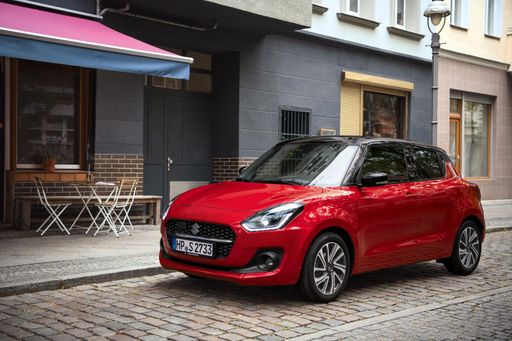 @ Suzuki Motor Corporation
@ Suzuki Motor Corporation
Suzuki Swift
Mitsubishi Space Star
The Mitsubishi Space Star offers a compact yet surprisingly spacious experience, making it an ideal choice for urban dwellers who need agility and comfort. Its sleek design is complemented by a range of vibrant colour options, adding a touch of flair to everyday commutes. With a focus on efficiency and practicality, the Space Star combines a user-friendly interface with modern technology to ensure a smooth driving experience.
details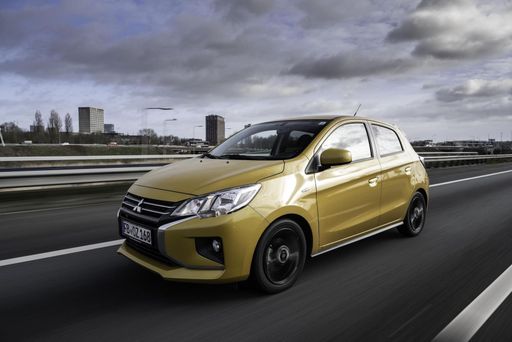 @ Mitsubishi Motors Corporation
@ Mitsubishi Motors Corporation
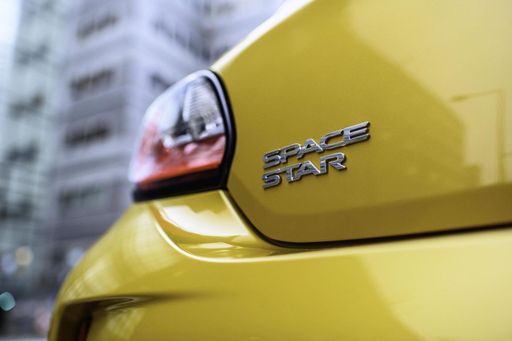 @ Mitsubishi Motors Corporation
@ Mitsubishi Motors Corporation
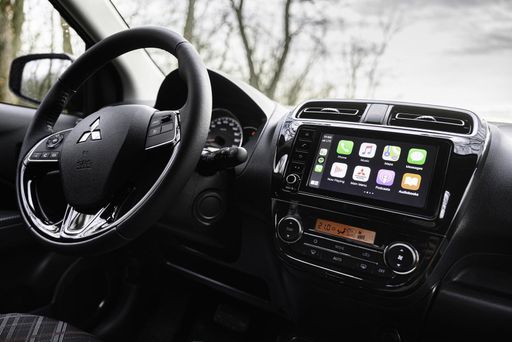 @ Mitsubishi Motors Corporation
@ Mitsubishi Motors Corporation
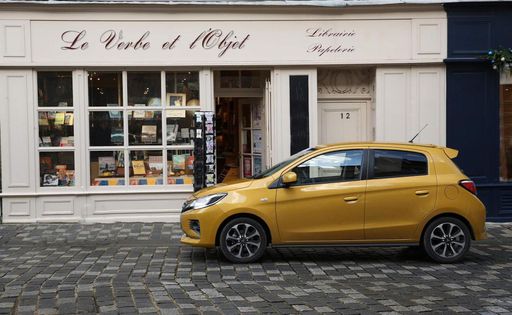 @ Mitsubishi Motors Corporation
@ Mitsubishi Motors Corporation
Suzuki Swift
The Suzuki Swift is a cheeky little hatch that turns city streets into its playground with lively handling and a grin-inducing drive. Practical enough for daily chores, thrifty to run and kinder on your wallet than many rivals, it's a sensible pick for buyers who want fun without drama.
details @ Suzuki Motor Corporation
@ Suzuki Motor Corporation
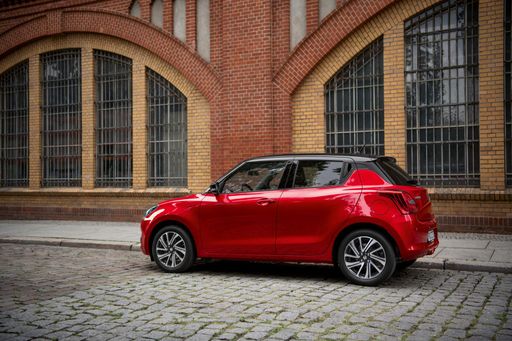 @ Suzuki Motor Corporation
@ Suzuki Motor Corporation
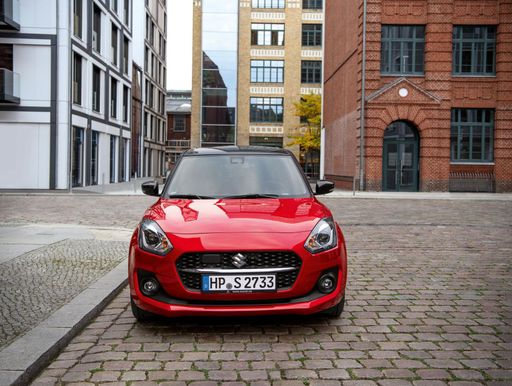 @ Suzuki Motor Corporation
@ Suzuki Motor Corporation
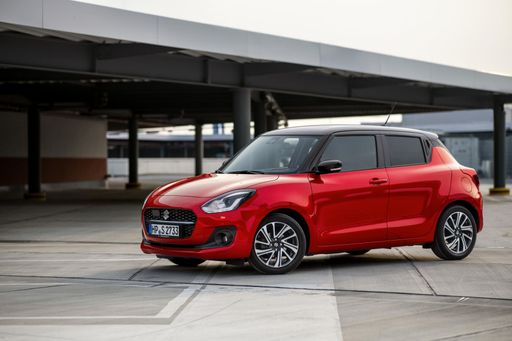 @ Suzuki Motor Corporation
@ Suzuki Motor Corporation
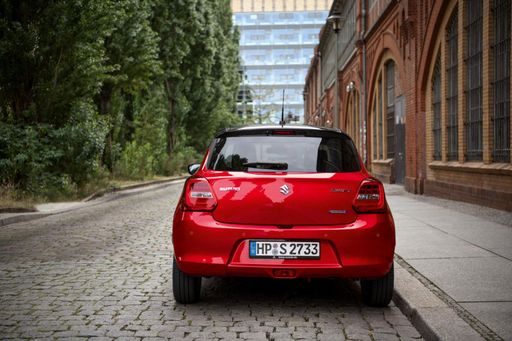 @ Suzuki Motor Corporation
@ Suzuki Motor Corporation
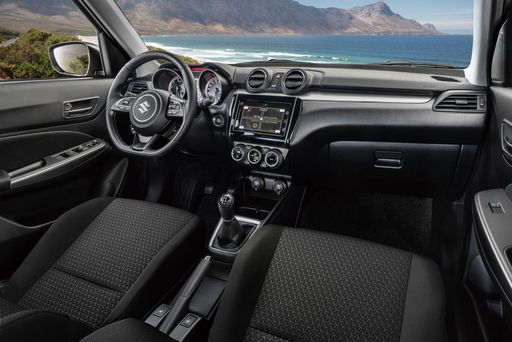 @ Suzuki Motor Corporation
@ Suzuki Motor Corporation
 @ Mitsubishi Motors Corporation
@ Mitsubishi Motors Corporation
|
 @ Suzuki Motor Corporation
@ Suzuki Motor Corporation
|
|
|
|
Costs and Consumption |
|
|---|---|
|
Price
11600 - 18700 £
|
Price
17100 - 21200 £
|
|
Consumption L/100km
4.9 - 5.5 L
|
Consumption L/100km
4.4 - 4.9 L
|
|
Consumption kWh/100km
-
|
Consumption kWh/100km
-
|
|
Electric Range
-
|
Electric Range
-
|
|
Battery Capacity
-
|
Battery Capacity
-
|
|
co2
112 - 125 g/km
|
co2
98 - 110 g/km
|
|
Fuel tank capacity
35 L
|
Fuel tank capacity
37 L
|
Dimensions and Body |
|
|---|---|
|
Body Type
Hatchback
|
Body Type
Hatchback
|
|
Seats
5
|
Seats
5
|
|
Doors
5
|
Doors
5
|
|
Curb weight
940 - 1011 kg
|
Curb weight
1069 - 1145 kg
|
|
Trunk capacity
209 - 235 L
|
Trunk capacity
265 L
|
|
Length
3845 mm
|
Length
3860 mm
|
|
Width
1665 mm
|
Width
1735 mm
|
|
Height
1505 mm
|
Height
1485 - 1510 mm
|
|
Max trunk capacity
881 - 912 L
|
Max trunk capacity
980 L
|
|
Payload
359 - 400 kg
|
Payload
282 - 296 kg
|
Engine and Performance |
|
|---|---|
|
Engine Type
Petrol
|
Engine Type
Petrol MHEV
|
|
Transmission
Manuel, Automatic
|
Transmission
Manuel, Automatic
|
|
Transmission Detail
Manual Gearbox, CVT
|
Transmission Detail
Manual Gearbox, CVT
|
|
Drive Type
Front-Wheel Drive
|
Drive Type
Front-Wheel Drive, All-Wheel Drive
|
|
Power HP
71 HP
|
Power HP
82 HP
|
|
Acceleration 0-100km/h
14.1 - 15.8 s
|
Acceleration 0-100km/h
-
|
|
Max Speed
163 - 167 km/h
|
Max Speed
160 - 170 km/h
|
|
Torque
102 Nm
|
Torque
112 Nm
|
|
Number of Cylinders
3
|
Number of Cylinders
3
|
|
Power kW
52 kW
|
Power kW
61 kW
|
|
Engine capacity
1193 cm3
|
Engine capacity
1197 cm3
|
General |
|
|---|---|
|
Model Year
2020 - 2022
|
Model Year
2024
|
|
CO2 Efficiency Class
C, D
|
CO2 Efficiency Class
C
|
|
Brand
Mitsubishi
|
Brand
Suzuki
|
What drivetrain options does the Mitsubishi Space Star have?
Available configurations include Front-Wheel Drive.
The prices and data displayed are estimates based on German list prices and may vary by country. This information is not legally binding.
